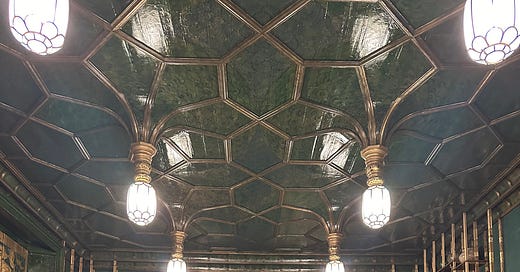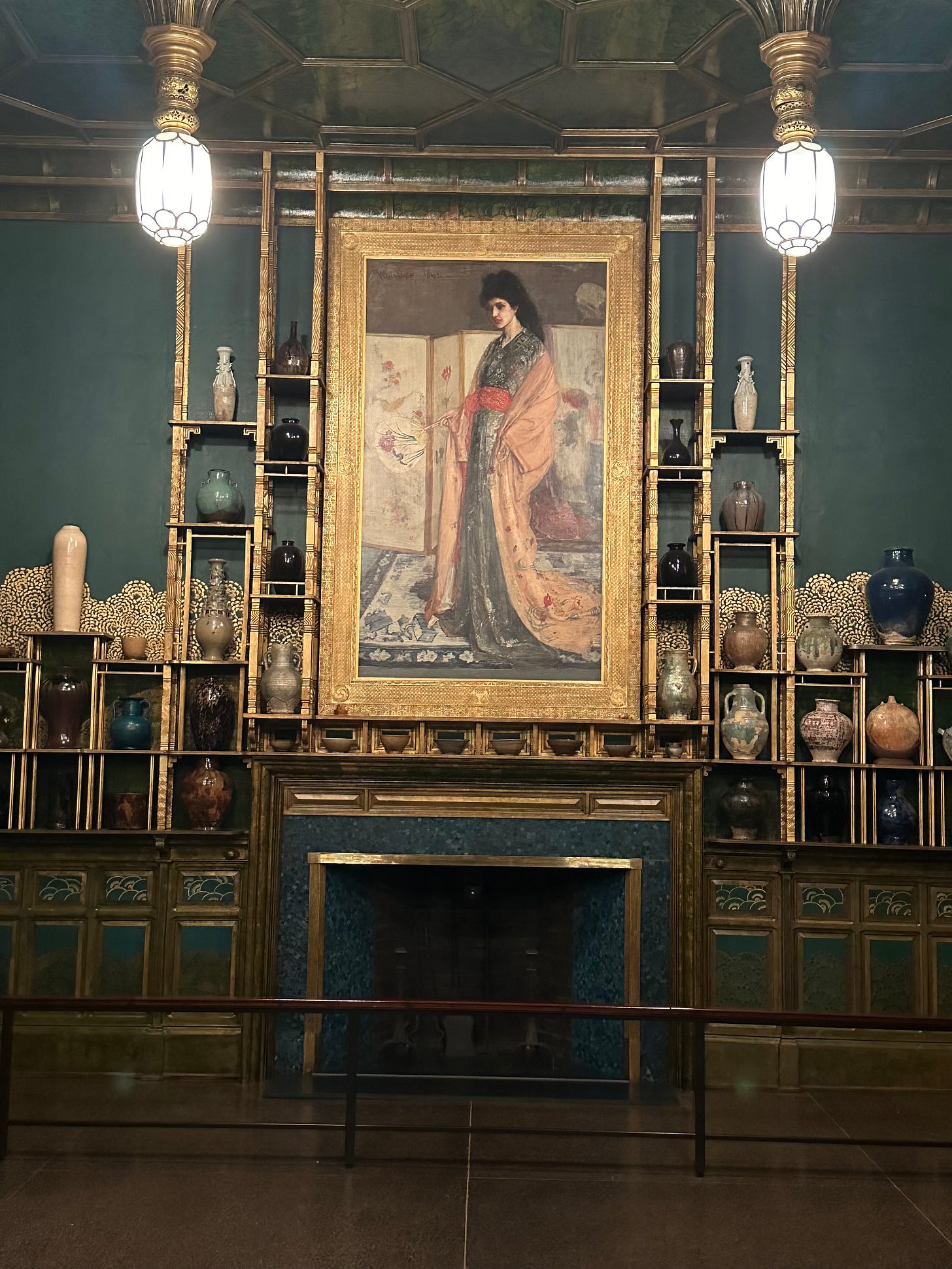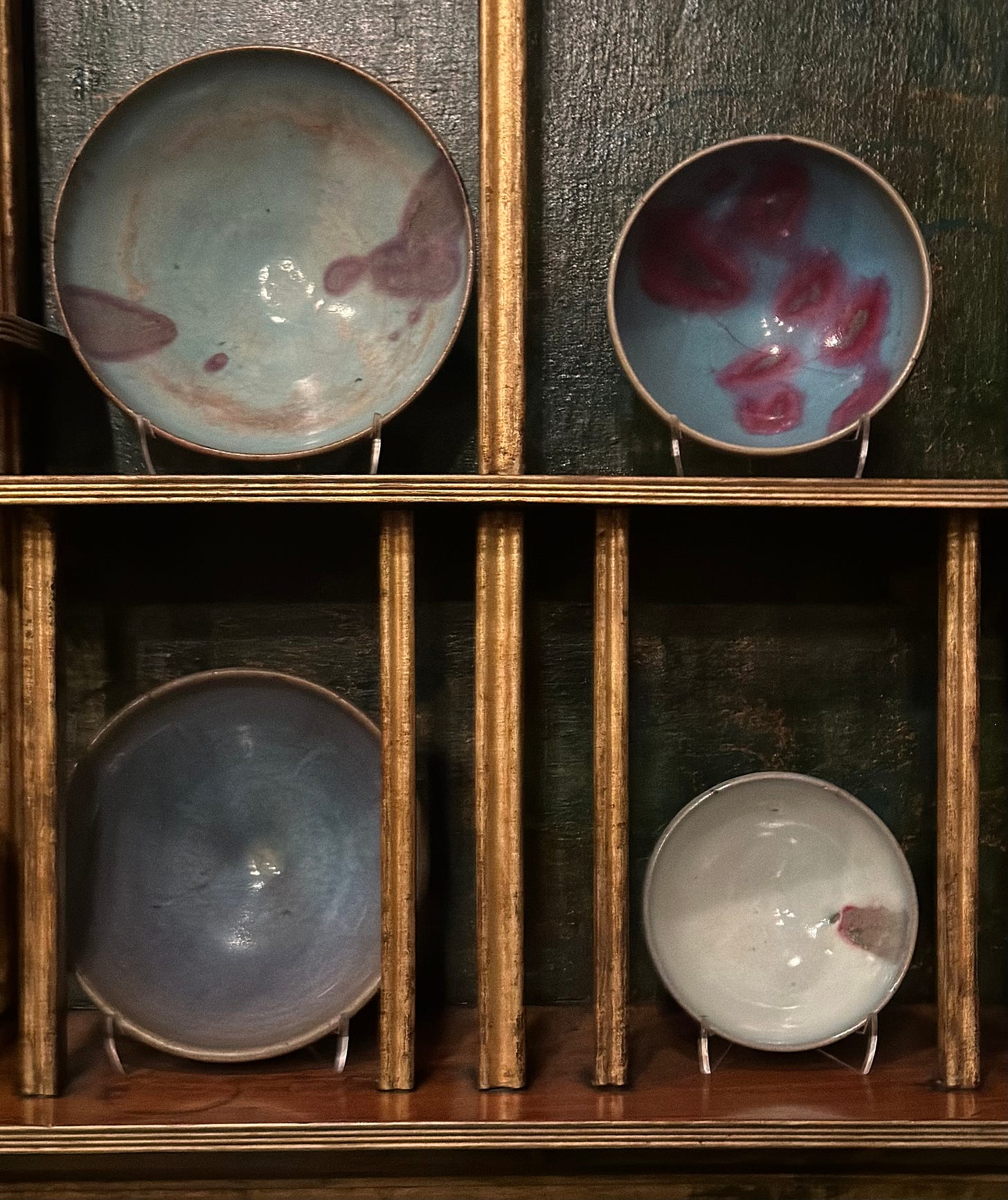Whistler's Peacock Room
An homage to the Far East tucked into a building inspired by an Italian villa
Asian art is a bit of a mystery to me. It was absent from the art history survey courses I took in college and, perhaps shamefully despite a few trips in that direction, I’ve never taken the time to educate myself. So in a city with many art museums, the Freer Gallery of Art, part of the Smithsonian’s National Museum of Asian Art, is a place I rarely visit.
But there’s one particularly gem tucked away there that I can recommend, one that melds the Victorian era’s penchant for overdecorating with an Asian aesthetic: the Peacock Room by James McNeil Whistler. If your memories of Whistler’s work conjures up the famous black and white portrait of his mother, this is the exact opposite: a riot of gold and deep turquoise decorating the walls and ceiling of what was once the dining room in the London townhouse of shipping magnate Frederick Leyland. Fun fact: although Whistler was much taken with Japanese woodblocks and other genres of Asian art, he never traveled there, taking his inspiration from works on display in London and Paris.
In the months that Whistler worked on this project, he became intimate with the Leyland family, engaged to Mrs. Leyland’s sister and perhaps a little too close to Mrs. Leyland herself. He got carried away far beyond the original assignment, asking for a sum to finish that Leyland considered exorbitant. There was a rupture between the two, reflected in the painting of two peacocks (seen above) fighting over money.
On Leyland’s death, his heirs auctioned off the collection of blue and white Chinese porcelain that filled the dining room’s built-in shelving. And then they sold the rest of the room as well to industrialist Charles Lang Freer who installed it in his Detroit mansion in 1904. Freer favored more subtly toned ceramics from Japan, China, Korea and the Middle East which is what you now see in the Peacock Room, much as it looked when the Freer Gallery opened in 1923.
In mid July, the Freer repurposed a small gallery next to the Peacock Room to explain the story of the room’s creation and effect on Whistler’s career. This exhibit, “Ruffled Feathers: Creating Whistler’s Peacock Room,” will be on display through January 31, 2027 so you have plenty of time. You can also take a docent-led tour on Tuesday at noon. While you’re there, you can also check out the Freer’s additional collection of Whistlers (plus a few other American landscapes) as well as its extensive holdings of Asian art including screens, scrolls, ceramics, paintings, and metalware. And you won’t see these particular works elsewhere: per Freer’s directive, none can travel to other sites.
The Freer Gallery is located on the south side of the Mall, just west of the Smithsonian Castle and directly across from the Smithsonian Metro stop. It is open daily from 10 am to 5:30 pm. Admission is free (your tax dollars at work).






